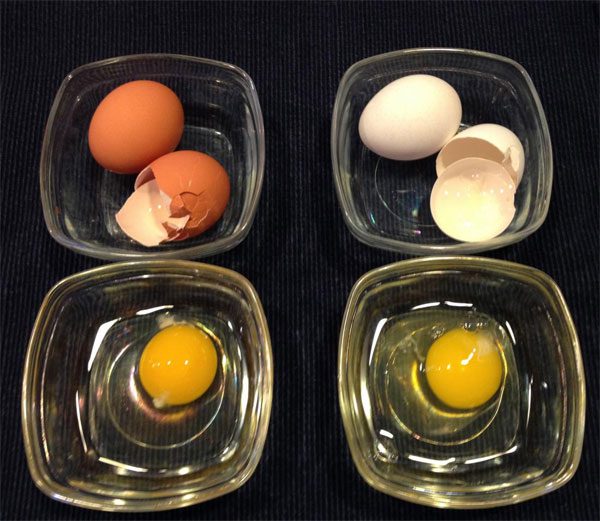Is Brown Chicken Egg Really More Nutritious Than White Chicken Egg?
If you are someone who frequently visits the market, or simply enjoys rummaging through the fridge, you will notice that the eggs we buy come in two colors: brown and white.
In fact, brown eggs are often preferred in industrial chicken farming, with the explanation that brown eggs have a higher nutritional content and are better for health compared to white eggs.

Brown chicken eggs and white chicken eggs.
But is this really true? Let’s explore this further.
They Are Different, But Not in Nutrition
These two types of eggs do differ, but the difference lies in the chickens. Specifically, chickens with white feathers and white earlobes (yes, chickens have ears…) lay white eggs. In contrast, chickens with reddish-brown feathers and red earlobes will “produce” darker eggs.
Of course, we are only considering common industrial chicken breeds. With native chickens, the eggs are white, smaller, and more expensive.

This is a white chicken, and it will lay white eggs.
What about nutritional content? In reality, brown eggs do contain more omega-3 (a beneficial fatty acid) than white eggs. However, the difference is extremely small and you would need to eat… thousands of eggs at once to see any significant effect.
Does Eggshell Color Affect Yolk Color?
In fact, there is no evidence that the color of the eggshell determines the color of the yolk. Instead, the chicken’s diet can have an influence. For example, if chickens eat a lot of corn, the yolk will be slightly darker.

There is no evidence that eggshell color determines yolk color.
Additionally, it is important to note that the color of the yolk does not affect its nutritional composition. So feel free to enjoy your eggs.
Are There Green Chicken Eggs?
Green Eggs – An Interesting Exception
Green eggs are a special case that does not follow conventional genetic rules. The green color appears due to the oocyan gene, which is found only in certain chicken breeds such as Araucana (Chile), Dongxiang, and Lushi (China). This color is the result of chromosomal duplication caused by the EAV-HP retrovirus, which is passed down through generations via DNA.
This virus is completely harmless, and green eggs are safe to eat. In fact, endogenous retrovirus genes also appear in the human genome, accounting for about 8% of our DNA. However, none of these genes can cause humans to produce green eggs.
The color of chicken eggshells is a result of a combination of genetics and environmental factors. Although colors may vary, all chicken eggs have the same nutritional value. Instead of focusing on the color, prioritize the quality and source of the eggs to ensure your health.


















































